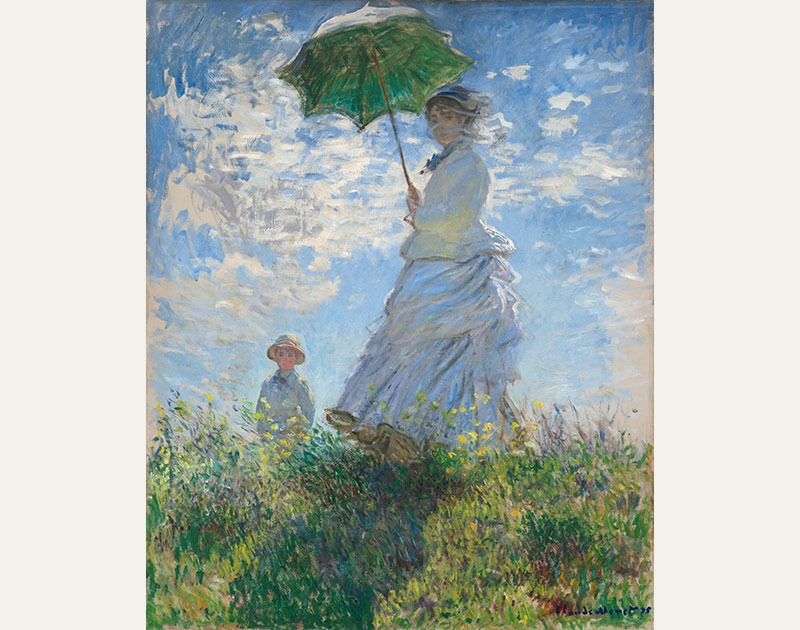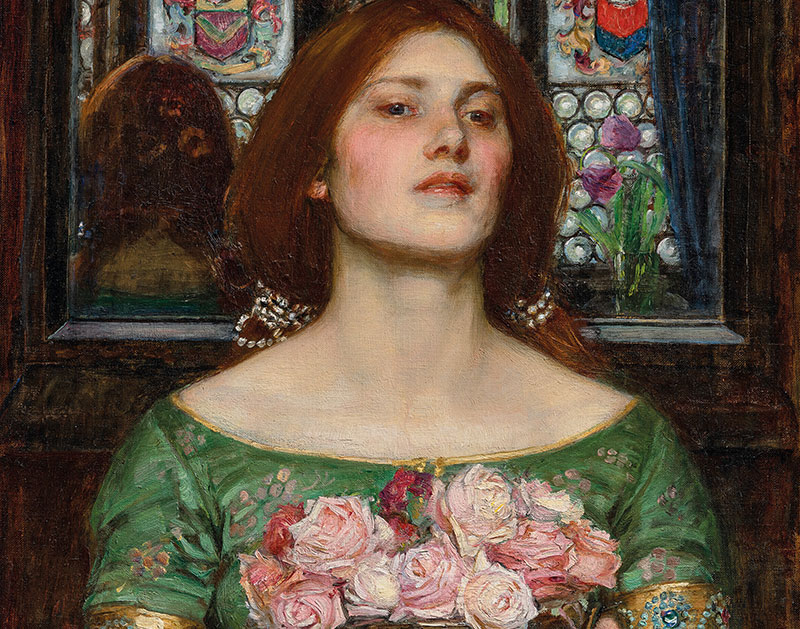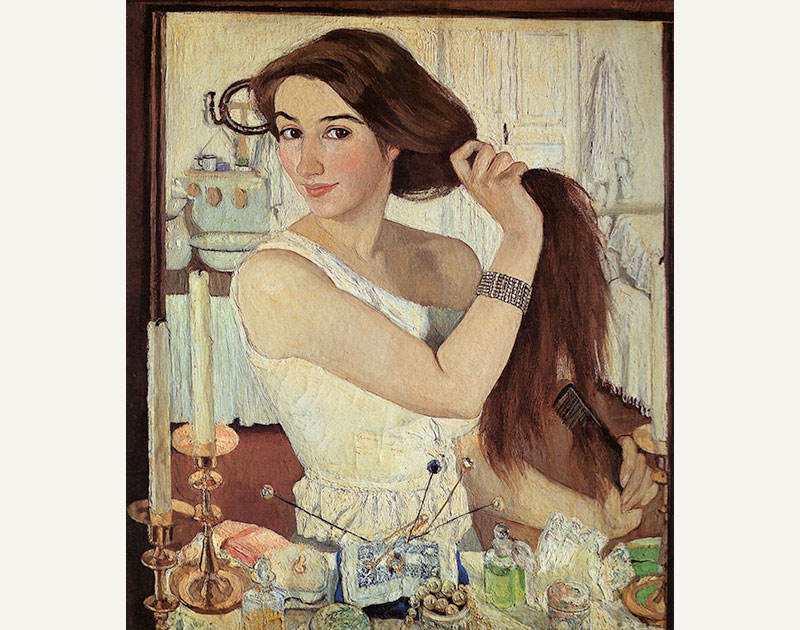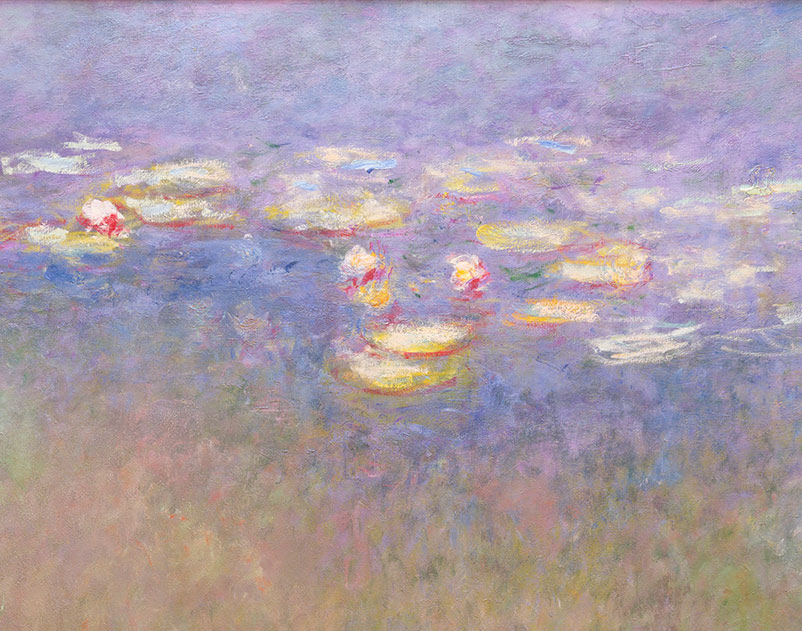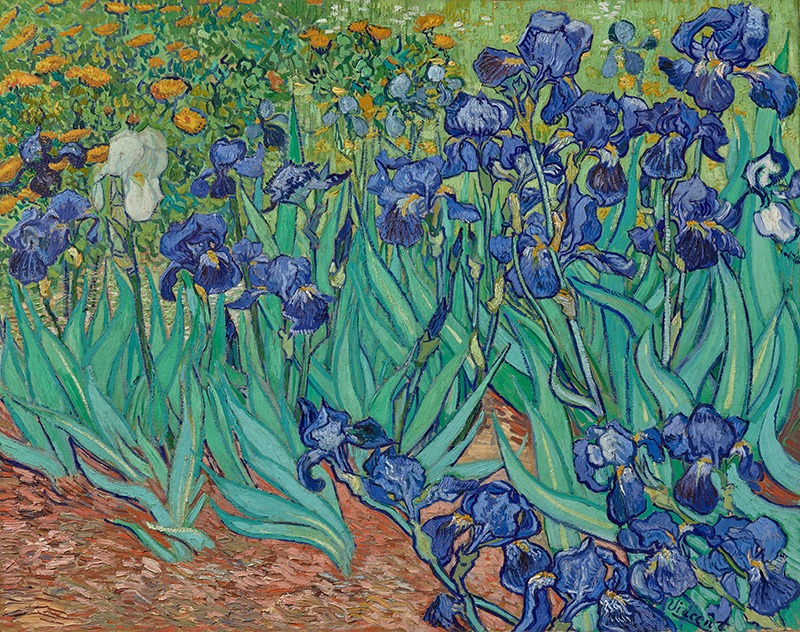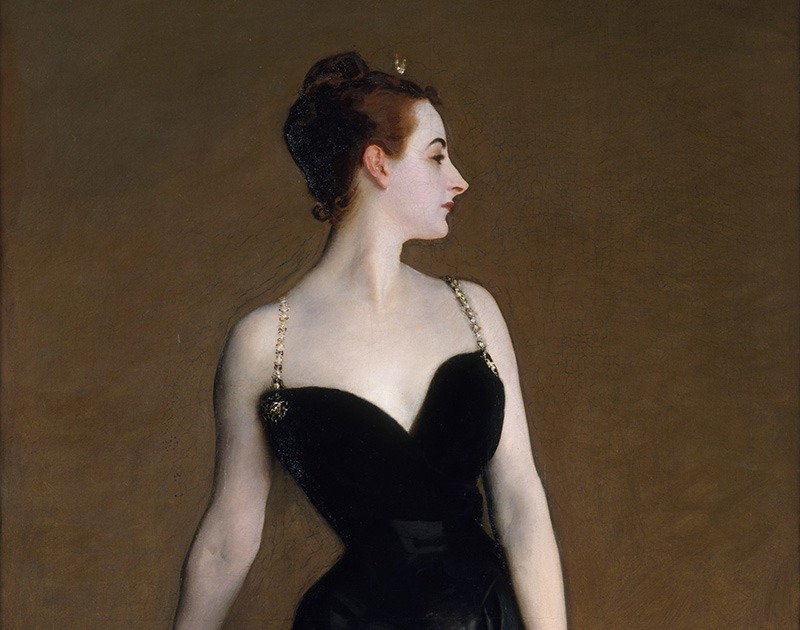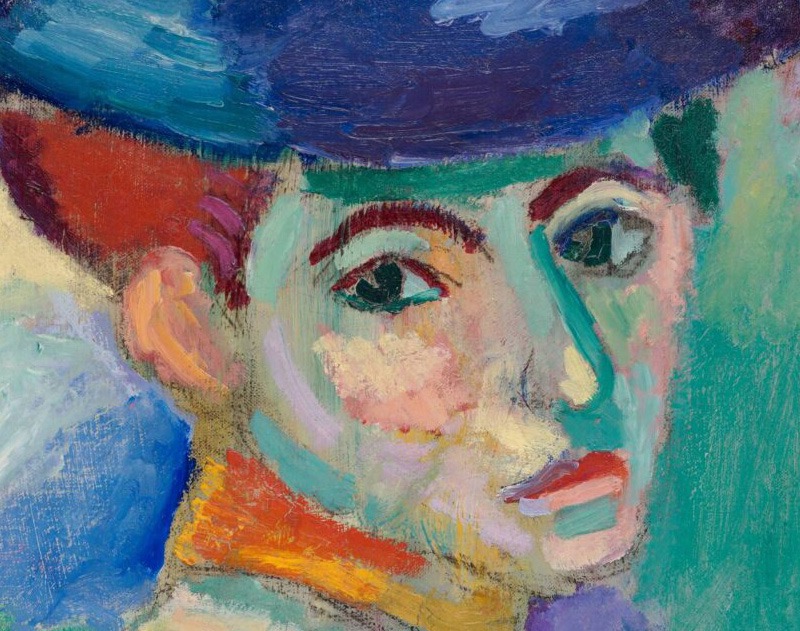laude Monet’s Woman with a Parasol (1875) is more than a painting—it’s a whispered secret between sunlight and memory. Capturing his first wife Camille and their son Jean on a windswept hill in Argenteuil, this masterpiece distills a fleeting moment of maternal warmth into eternal poetry. Camille stands like a summer storm made flesh, her white dress swirling in dialogue with the clouds, while the parasol tilts gently, casting dappled shadows that seem to tremble with life. The boy, half-hidden yet curious, peeks from behind her skirts, his presence a tender counterpoint to her poised grace.
What lingers isn’t just the visual harmony of cobalt skies and buttercup-yellow wildflowers, but the quiet urgency beneath the idyll. Painted during Camille’s battle with illness, the work becomes a love letter written in light—every brushstroke a defiance of time’s cruelty. The parasol, once a shield against the sun, transforms into a metaphor for fragile shelter; its faded green hue, now mossy with age at Washington’s National Gallery, whispers of pigments outlasting human lives. Monet would later recreate this scene with his stepdaughter, but the ghost of Camille haunts every version, her smile forever suspended between breeze and oblivion.
For modern viewers, the painting pulses with dual heartbeats: the joy of a family picnic and the ache of knowing this moment would slip through Monet’s fingers. When sunlight catches the gallery glass just right, Camille’s skirt seems to sway again, reminding us that art’s truest magic lies not in angles or analysis, but in its power to make lost seconds breathe anew.


